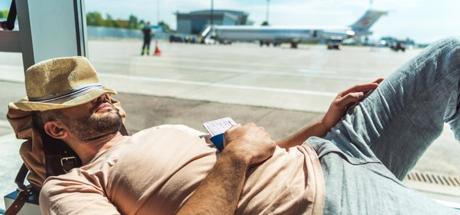
Whether you're traveling for business or pleasure, you're going to need sleep to stay on top of your game. International travels let you experience different food, people, and culture, but, like most things, you have to take the bad (jet lag) with the good ( streusel). Preparation and planning can prevent at least some of the discomforts that come when you journey far from home.
Why Do We Get Jet Lag?
Your body's circadian rhythms use the light of the day/night schedule to correctly time sleep hormones. If you travel far enough, changes in light signals leave the brain scrambling to keep up. It can take several days for the circadian portion of the brain to fully acclimatize itself to your new time zone. However, that may not fit in with your travel plans.
Pre-Trip Preparation
The fight with jet lag starts long before you get on the plane. Several nights before you leave, start adjusting your sleep schedule closer to that of your destination by 15 to 30-minute increments. The further you're traveling the sooner you'll need to start changing your sleep schedule.
Your meal timing can also be adjusted to match that of your destination. Like light exposure, meal timing helps establish circadian rhythms. Adjusting your meals by 15 to 30 minutes can help your body alter the release of sleep hormones to more closely match the sleep schedule you'll need at your destination.
Use Your Flight Time to Your Advantage
In some cases, you can use your flight time to your advantage. For example, if you'll be arriving at your destination in the morning, sleep as much as you can while on your flight. That way, once you arrive, you'll be better rested and ready to go. On the flip side, if you're arriving at night, try to stay awake as much as possible so you're ready for bed upon arrival.
While you fly, stay hydrated. Dehydration leads to fatigue that can make it harder to stay awake and alert. A good rule of thumb is to drink eight ounces of water for every one hour of flight time.
Dealing with layovers? Another way to prepare for arrival is to take short naps, but no more than 15 to 20 minutes at a time. Travel pillows let you sleep from almost any position. An inflatable model can easily stow away in a carry-on so you don't have to worry about extra bulk. For your safety, nap in plain sight of security cameras or near other travelers.
You're Finally There!
The exhilaration of arrival can quickly wear off if you're fighting jet lag. Once your feet hit the ground, start spending as much time in natural light as possible. Natural light resets the circadian rhythms; the more you can soak up the better. If inclement weather gets in the way, look for areas with bright artificial lights, which can have the same effect.
Regular exercise can help your body stay awake when you need it and sleep when you're tired. Strenuous exercise causes the release of endorphins and adrenaline that can keep you awake for four or more hours. A morning or afternoon run boosts your energy so you'll feel more awake yet help you feel fatigued at night when you're ready to sleep.
You might also want to include a few comforts from home. Bring along your own pillowcase or sleeping bag in case your hotel's amenities lack that homey feeling. It might seem strange, but the more at home you feel, the better you'll sleep.
With a plan in place, adequate sleep can help you fully enjoy your travels. You'll be mentally sharp for business meetings and physically ready to experience all your destination has to offer.

